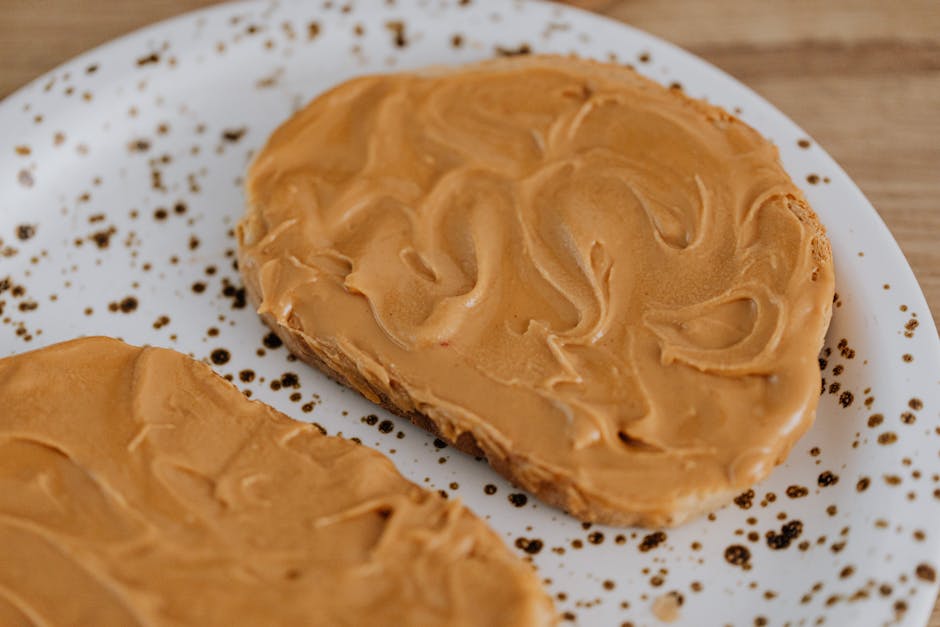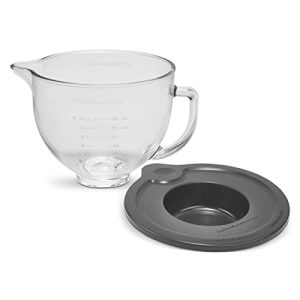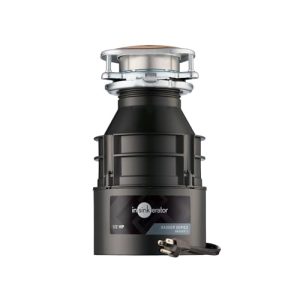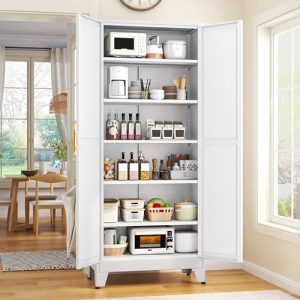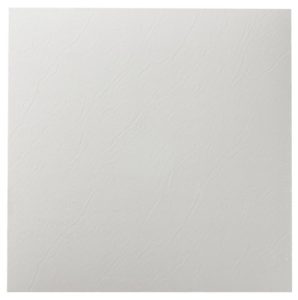If you want your Kitchen Aid blender to run smoothly and last longer, knowing how to properly lube it is key. You might not realize it, but a little maintenance can save you from costly repairs or buying a new blender.
In this guide, you’ll discover simple steps to keep your blender’s motor and blades working like new. By the end, you’ll feel confident in giving your Kitchen Aid the care it needs, making every blend effortless and quiet. Ready to boost your blender’s performance?
Let’s dive in.
Why Lubricate Your Blender
Lubricating your Kitchen Aid blender might sound like a small task, but it plays a crucial role in keeping your appliance running smoothly. Many people overlook this step, not realizing how lubrication affects the blender’s performance and longevity. Taking a few moments to lube your blender can save you from costly repairs and frustrating breakdowns.
Benefits Of Regular Lubrication
Keeping your blender’s moving parts well-lubricated reduces friction, which helps the motor work more efficiently. This means your blender will blend ingredients faster and with less noise.
Regular lubrication also prevents wear and tear on the gears and seals. This extends the life of your blender and ensures you get consistent performance every time you use it.
Another benefit is avoiding leaks. Proper lubrication helps maintain tight seals, preventing liquids from escaping and causing damage to internal components.
Signs Your Blender Needs Lubrication
Have you noticed your blender making unusual grinding or squeaking noises? That’s often a clear sign the internal parts need lubrication.
If your blender struggles to blend smoothly or the motor seems to be working harder than usual, lubrication might be overdue. You might even feel the jar or base getting hotter during use.
Another indication is if you spot leaks around the blade assembly. This could mean the seals are dry and need lubrication to function properly again.
Tools And Materials Needed
Before you start lubing your Kitchen Aid blender, gathering the right tools and materials is crucial. Using incorrect lubricants or missing essential supplies can damage your blender or make the process more difficult. Having everything on hand ensures a smooth, efficient job that keeps your blender running quietly and effectively.
Choosing The Right Lubricant
Not all lubricants are safe for kitchen appliances. You need a food-grade lubricant that won’t contaminate your blender or affect your food’s taste and safety. A common choice is a silicone-based or white lithium grease labeled as food-safe.
Have you ever used a general-purpose grease only to find it smelled odd or left a residue? That’s a clear sign it’s not meant for kitchen tools. Always double-check the label to make sure it’s FDA-approved for food-contact surfaces.
Additional Supplies To Have Ready
Along with the lubricant, you’ll want some basic tools to make the job easier. A small flathead screwdriver can help you access the bearing or blade assembly. A clean cloth or paper towels are handy for wiping off old grease and excess lubricant.
Don’t forget gloves to keep your hands clean and a small container to hold screws or parts while you work. Having a flashlight nearby can also help you see inside tight spaces. Preparing these supplies ahead will save frustration and prevent you from interrupting the process to find missing items.
Preparing Your Blender For Lubrication
Begin by unplugging the Kitchen Aid blender for safety. Remove the jar and blade assembly carefully. Clean all parts to avoid dirt mixing with the lubricant.
Preparing your KitchenAid blender for lubrication ensures it works smoothly. Proper preparation prevents damage and extends the life of your appliance. Follow these steps to make the process easy and effective.Unplugging And Disassembling
Safety first. Always unplug your blender before maintenance. This prevents accidents and electrical hazards. Once unplugged, disassemble the blender. Remove the jar, blade, and other detachable parts. Keep each part organized for easy reassembly later.Cleaning Blender Parts
Cleaning is crucial before lubrication. Use warm, soapy water to clean each part. Scrub gently to remove food residue and grease. Rinse thoroughly and allow parts to air dry. Ensure no moisture remains, as it can affect lubrication effectiveness.Step-by-step Lubrication Process
Keeping your Kitchen Aid blender running smoothly often depends on regular lubrication of its gear assembly. This process might seem tricky at first, but with clear steps and the right tools, you can do it yourself and save time and money. Let’s walk through the lubrication process to ensure your blender stays in top condition.
Accessing The Gear Assembly
First, unplug your blender to keep safety a priority. Remove the blender jar and base by unscrewing the bottom plate carefully. You’ll find the gear assembly inside the base, usually covered by a plastic or metal casing.
Use a screwdriver to take off this casing, exposing the gears. Notice how the gears fit together – this will help when you apply lubricant. Have you ever tried to fix something only to realize you didn’t fully understand how it works? Taking a moment to observe the gear layout makes a big difference.
Applying Lubricant Properly
Choose a food-safe lubricant designed for kitchen appliances to avoid contamination. Apply a small amount directly onto the gears; too much lubricant can attract dust and cause buildup. Use a clean brush or your finger to spread it evenly over all moving parts.
Rotate the gears manually to ensure the lubricant reaches every corner. Think about how the blender feels when you turn the base—smooth movement means you did it right. What signs do you notice when your blender’s gears need lubrication? Recognizing these can help you maintain your appliance better.
Reassembling The Blender
Once the lubrication is complete, carefully replace the gear assembly cover and tighten the screws securely. Put the blender base back together and test it without the jar to check for smooth operation. If everything sounds quiet and runs smoothly, you’ve done a great job.
Remember, regular maintenance like this extends the life of your blender. How often do you check your kitchen appliances for small fixes? Making lubrication a habit can prevent bigger problems later on.
Testing And Maintenance Tips
Proper testing and maintenance keep your Kitchen Aid blender running smoothly. Regular checks help spot issues early. This prevents costly repairs and extends your blender’s life. Follow these simple tips for best results.
Checking For Smooth Operation
Run the blender without any ingredients first. Listen for unusual noises like grinding or rattling. These sounds may show worn or dry parts. Check if the blades turn freely without resistance. Feel for any rough spots or jerks while spinning. Tighten loose screws or parts if needed. A smooth operation means your blender parts are well-lubricated and working properly.
How Often To Lubricate
Lubricate your blender’s gear assembly every six months. If you use it daily, consider lubricating every three months. More frequent lubrication keeps parts moving easily. Use only food-safe lubricant designed for kitchen appliances. Over-lubricating can attract dust and cause buildup. Clean old grease before applying new lubricant for best results.
Common Mistakes To Avoid
Knowing how to lube your Kitchen Aid blender correctly can save you time and prevent damage. But many people make avoidable mistakes during the process. These errors can lead to malfunction or even void your warranty. Let’s look at two common pitfalls and how to steer clear of them.
Using The Wrong Lubricant
Not all lubricants are safe for your blender’s parts. Using automotive grease or household oils might seem convenient, but they can damage seals or contaminate food. Always choose a food-grade lubricant designed specifically for kitchen appliances.
Think about the last time you grabbed a random oil for your blender—it probably caused more harm than good. Do you really want to risk ruining your blender over a small saving? Stick to lubricants recommended by the manufacturer to keep your blender running smoothly.
Over-lubricating
It’s easy to believe that more lubricant means better performance. But too much grease can cause buildup, attracting dust and debris. This can lead to clogs and reduce the blender’s efficiency.
Apply just enough lubricant to coat the necessary parts without excess. Imagine pouring oil into your car engine; too much can cause leaks and other problems. The same principle applies here—less is often more.
Frequently Asked Questions
How Often Should I Lube My Kitchen Aid Blender?
Lubricate your Kitchen Aid blender every 6 months for smooth operation. Regular lubrication prevents wear and extends the blender’s lifespan effectively.
What Type Of Lubricant Is Best For Kitchen Aid Blenders?
Use food-grade, non-toxic lubricant designed for kitchen appliances. Avoid oil-based lubricants to prevent contamination and maintain blender safety.
Can I Lube The Blender Without Disassembling It?
No, disassemble the blender base to access the drive shaft. Proper lubrication requires direct application on moving parts inside the blender.
Is It Safe To Use Wd-40 On Kitchen Aid Blenders?
No, WD-40 is not food-safe and can damage blender components. Always choose a food-safe lubricant to protect your appliance and health.
Conclusion
Keeping your Kitchen Aid blender well-lubricated helps it run smoothly. Regularly applying the right grease prevents wear and tear. This simple step extends your blender’s life and saves money. Clean the parts before you lube to avoid dirt buildup. Don’t use too much grease; a small amount works best.
Follow the instructions carefully for best results. A well-maintained blender blends better and lasts longer. Take a few minutes for lubrication—it pays off in performance. Easy care means your blender stays ready for any kitchen task.

Sophie Hartwell is the founder of KitchenQuik.com, where she shares kitchen tips, smart cooking hacks, and the best product picks to make everyday cooking easier and more enjoyable.
